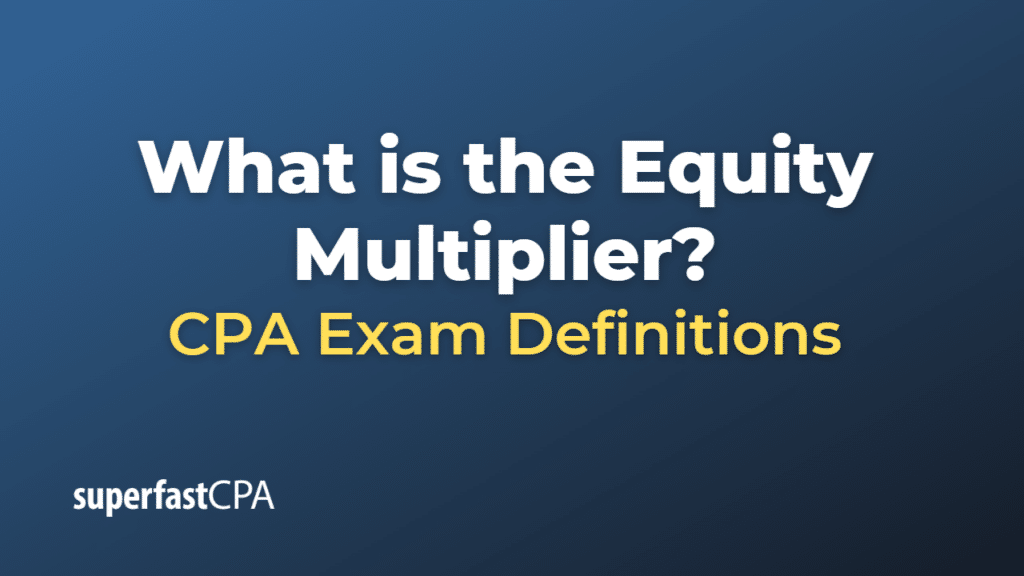Equity Multiplier
The equity multiplier is a financial leverage ratio that measures a company’s financial structure and the amount of the company’s assets that are financed by equity. It is calculated by dividing a company’s total assets by its total equity.
Here’s the formula:
\(\text{Equity Multiplier} = \frac{\text{Total Assets}}{\text{Total Equity}} \)
The equity multiplier provides insight into a company’s leverage, or how much debt it is using to finance its assets.
- A high equity multiplier indicates a higher degree of financial leverage, meaning the company is using more debt to finance its assets. This could be a sign of risk as it may indicate that the company is relying heavily on borrowed money, which it will have to repay regardless of its financial success.
- A low equity multiplier indicates lower financial leverage, meaning the company is using less debt and more equity to finance its assets. This is generally viewed as less risky, as equity does not need to be repaid if the company gets into financial trouble. However, too low a ratio could also suggest that the company is not taking advantage of the potential benefits of financial leverage.
As with any financial ratio, the equity multiplier should be used in conjunction with other financial metrics and ratios to provide a comprehensive view of a company’s financial health. Also, it’s most useful when comparing companies within the same industry, as different industries have different capital structures and financial norms.
Example of the Equity Multiplier
Let’s say we have two companies: Company A and Company B.
Company A has total assets of $10 million and total equity of $5 million. Therefore, its equity multiplier would be:
\(\text{Equity Multiplier of Company A} = \frac{\text{Total Assets}}{\text{Total Equity}} \)
\(= \frac{\text{\$10 million}}{\text{\$5 million}} = 2 \)
Company B, on the other hand, has total assets of $10 million and total equity of $2 million. Therefore, its equity multiplier would be:
\(\text{Equity Multiplier of Company B} = \frac{\text{Total Assets}}{\text{Total Equity}} \)
\(= \frac{\text{\$10 million}}{\text{\$2 million}} = 5 \)
In this example, Company A has a lower equity multiplier, meaning it has used less debt in proportion to equity to finance its assets. This suggests it may be less risky than Company B.
Company B has a higher equity multiplier, which means it has used more debt in comparison to equity to finance its assets. This suggests it is more leveraged than Company A and could be seen as more risky, as it will have more debt obligations to repay.
This is a simplified example and in the real world, many other factors would also need to be taken into account to assess the financial health and risk level of a company.













